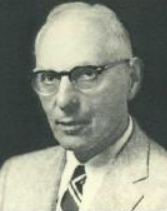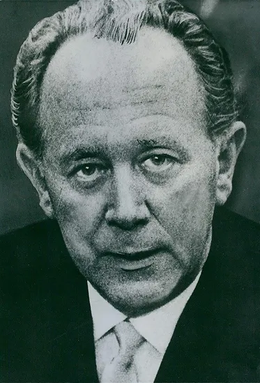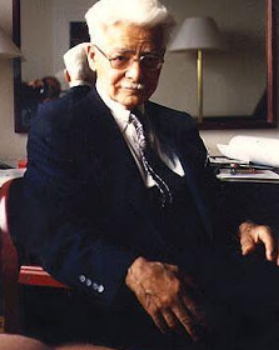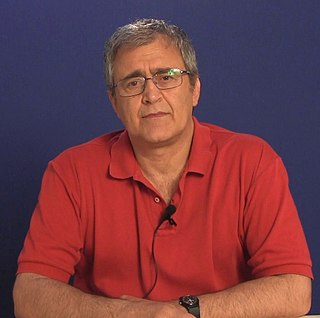
Candidiasis is a fungal infection due to any species of the genus Candida. When it affects the mouth, in some countries it is commonly called thrush. Signs and symptoms include white patches on the tongue or other areas of the mouth and throat. Other symptoms may include soreness and problems swallowing. When it affects the vagina, it may be referred to as a yeast infection or thrush. Signs and symptoms include genital itching, burning, and sometimes a white "cottage cheese-like" discharge from the vagina. Yeast infections of the penis are less common and typically present with an itchy rash. Very rarely, yeast infections may become invasive, spreading to other parts of the body. This may result in fevers, among other symptoms.

Sodium bicarbonate (IUPAC name: sodium hydrogencarbonate), commonly known as baking soda or bicarbonate of soda, is a chemical compound with the formula NaHCO3. It is a salt composed of a sodium cation (Na+) and a bicarbonate anion (HCO3−). Sodium bicarbonate is a white solid that is crystalline but often appears as a fine powder. It has a slightly salty, alkaline taste resembling that of washing soda (sodium carbonate). The natural mineral form is nahcolite, although it is more commonly found as a component of the mineral trona.

Quackery, often synonymous with health fraud, is the promotion of fraudulent or ignorant medical practices. A quack is a "fraudulent or ignorant pretender to medical skill" or "a person who pretends, professionally or publicly, to have skill, knowledge, qualification or credentials they do not possess; a charlatan or snake oil salesman". The term quack is a clipped form of the archaic term quacksalver, derived from Dutch: kwakzalver a "hawker of salve" or rather somebody who boasted about their salves, more commonly known as ointments. In the Middle Ages the term quack meant "shouting". The quacksalvers sold their wares at markets by shouting to gain attention.
Essiac is a herbal tea promoted as an alternative treatment for cancer and other illnesses. There is no evidence it is beneficial to health. In a number of studies Essiac either showed no action against cancer cells, or actually increased the rate of cancer growth.
The Burzynski Clinic is a clinic selling an unproven cancer treatment, which has been characterized as harmful quackery. It was founded in 1976 and is located in Houston, Texas, in the United States. It offers a form of chemotherapy originally called "antineoplaston therapy" devised by the clinic's founder Stanislaw Burzynski in the 1970s. Antineoplaston is Burzynski's term for a group of urine-derived peptides, peptide derivatives, and mixtures. There is no accepted scientific evidence of benefit from antineoplaston combinations for various diseases, and the Clinic's claimed successes have not been replicated by independent researchers. The therapy has been rebranded in various ways over the years to mirror fashions in medicine, for example as a kind of "immunotherapy". The therapy is administered through the ruse of running a large numbers of clinical trials, which long-time Burzynski lawyer Richard Jaffe has described as "a joke".

Max Gerson was a German-born American physician who developed the Gerson therapy, a dietary-based alternative cancer treatment that he claimed could cure cancer and most chronic, degenerative diseases. Gerson therapy involves a plant-based diet with coffee enemas, ozone enemas, dietary supplements and raw calf liver extract, the latter was discontinued in the 1980s after patients were hospitalized for bacterial infections.

Josef Maria Issels was a German physician known for promoting an alternative cancer treatment, the Issels treatment. He claimed to cure cancer patients who had been declared incurable by conventional cancer treatments. During Issels' lifetime, his methods were controversial, and in 1961 he was charged with fraud and manslaughter for allegedly promising fraudulent cancer cures and for the subsequent deaths of patients under his care who refused standard cancer treatment. An initial conviction on the manslaughter charge was overturned in 1964 on the grounds that Issels had genuinely believed that his therapy could cure cancer. Since at least 1972 the Issels treatment is described as unproven, and considered ineffective as a treatment for cancer.

Onychomycosis, also known as tinea unguium, is a fungal infection of the nail. Symptoms may include white or yellow nail discoloration, thickening of the nail, and separation of the nail from the nail bed. Fingernails may be affected, but it is more common for toenails. Complications may include cellulitis of the lower leg. A number of different types of fungus can cause onychomycosis, including dermatophytes and Fusarium. Risk factors include athlete's foot, other nail diseases, exposure to someone with the condition, peripheral vascular disease, and poor immune function. The diagnosis is generally suspected based on the appearance and confirmed by laboratory testing.

Hulda Regehr Clark was a Canadian naturopath, author, and practitioner of alternative medicine. Clark claimed all human disease was related to parasitic infection, and also claimed to be able to cure all diseases, including cancer and HIV/AIDS, by "zapping" them with electrical devices which she marketed. Clark wrote several books describing her methods and operated clinics in the United States. Following a string of lawsuits and eventual action by the Federal Trade Commission, she relocated to Tijuana, Mexico, where she ran the Century Nutrition clinic.
Hoxsey Therapy or Hoxsey Method is an alternative medical treatment promoted as a cure for cancer. The treatment consists of a caustic herbal paste for external cancers or a herbal mixture for "internal" cancers, combined with laxatives, douches, vitamin supplements, and dietary changes. Reviews by major medical bodies, including the U.S. Food and Drug Administration (FDA), the National Cancer Institute, the American Cancer Society, M. D. Anderson Cancer Center, and Memorial Sloan-Kettering Cancer Center, have found no evidence that Hoxsey Therapy is an effective treatment for cancer. The sale or marketing of the Hoxsey Method was banned in the United States by the FDA on September 21, 1960 as a "worthless and discredited" remedy and a form of quackery.

Luigi Di Bella was an Italian medical doctor and physiology professor. In the late 1980s, he created a purported treatment known as "Di Bella therapy" for cancer that precipitated an international controversy.

Alternative cancer treatment describes any cancer treatment or practice that is not part of the conventional standard of cancer care. These include special diets and exercises, chemicals, herbs, devices, and manual procedures. Most alternative cancer treatments do not have high-quality evidence supporting their use and many have been described as fundamentally pseudoscientific. Concerns have been raised about the safety of some purported treatments and some have been found unsafe in clinical trials. Despite this, many untested and disproven treatments are used around the world.

Barbara O'Neill is an Australian alternative health care promoter who advertises unsupported health practices described as misinformation and a risk to health and safety by the New South Wales Health Care Complaints Commission. She does not have any recognised qualifications and did not finish nursing training. She has presented her claims at alternative medicine organisations, wellness retreats, and Seventh-day Adventist Churches. She is married to Michael O'Neill, the founder of the now-defunct Informed Medical Options Party, an anti-vaccination and anti-fluoride political group.

Black salve, also known by the brand name Cansema, is an ineffective and unsafe alternative cancer treatment. The product is commonly classified as an escharotic—a topical paste which destroys skin tissue and leaves behind a scar called an eschar. Escharotics were widely used to treat skin lesions in the early 1900s, but have since been replaced by safer and more effective treatments. Escharotics, such as black salves, are currently advertised by some alternative medicine marketers as treatments for skin cancer, often with unsubstantiated testimonials and unsupported claims of effectiveness.

Massimo Mazzucco is an Italian filmmaker who has produced documentary films such as The New American Century and Cancer -The Forbidden Cures. Mazzucco is also the administrator of luogocomune.net, an Italian news site concentrating mostly on the September 11 WTC attacks.

Intravenous sodium bicarbonate, also known as sodium hydrogen carbonate, is a medication primarily used to treat severe metabolic acidosis. For this purpose it is generally only used when the pH is less than 7.1 and when the underlying cause is either diarrhea, vomiting, or the kidneys. Other uses include high blood potassium, tricyclic antidepressant overdose, and cocaine toxicity as well as a number of other poisonings. It is given by injection into a vein.
The Oasis of Hope Hospital is a clinic in Tijuana, Mexico providing alternative cancer treatments to its customers. The clinic was founded by the physician Ernesto Contreras. After his death in 2003, the management of the hospital was taken over by his son, Francisco Contreras, and nephew, Daniel Kennedy.

Seattle Cancer Care Alliance (SCCA) is a cancer treatment and research center in Seattle, Washington. Established in 1998, this nonprofit provides clinical oncology care for patients treated at its three partner organizations: Fred Hutchinson Cancer Research Center, Seattle Children's and UW Medicine. Together, these four institutions form the Fred Hutch/University of Washington Cancer Consortium.
Microascus manginii is a filamentous fungal species in the genus Microascus. It produces both sexual (teleomorph) and asexual (anamorph) reproductive stages known as M. manginii and Scopulariopsis candida, respectively. Several synonyms appear in the literature because of taxonomic revisions and re-isolation of the species by different researchers. M. manginii is saprotrophic and commonly inhabits soil, indoor environments and decaying plant material. It is distinguishable from closely related species by its light colored and heart-shaped ascospores used for sexual reproduction. Scopulariopsis candida has been identified as the cause of some invasive infections, often in immunocompromised hosts, but is not considered a common human pathogen. There is concern about amphotericin B resistance in S. candida.











